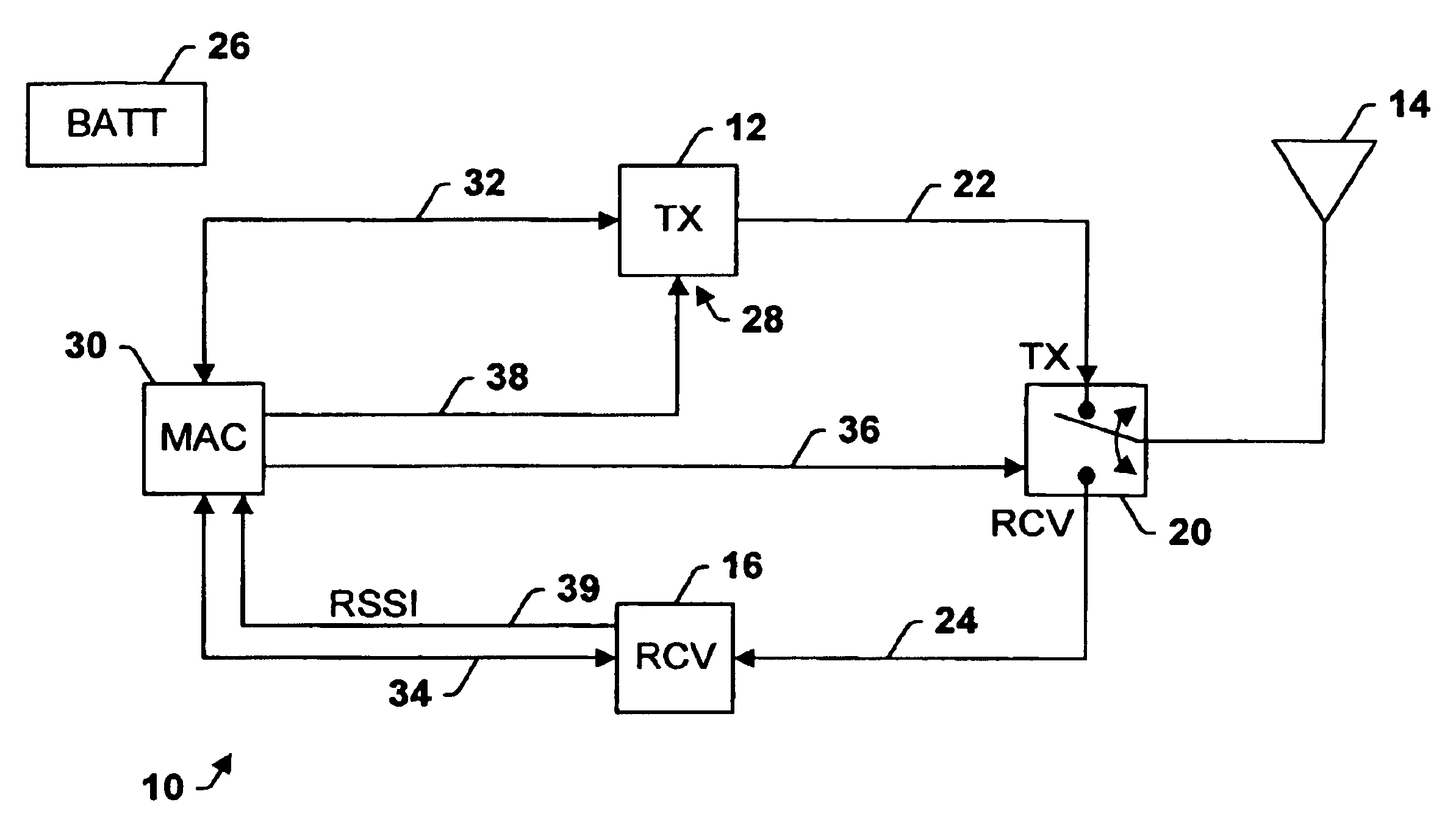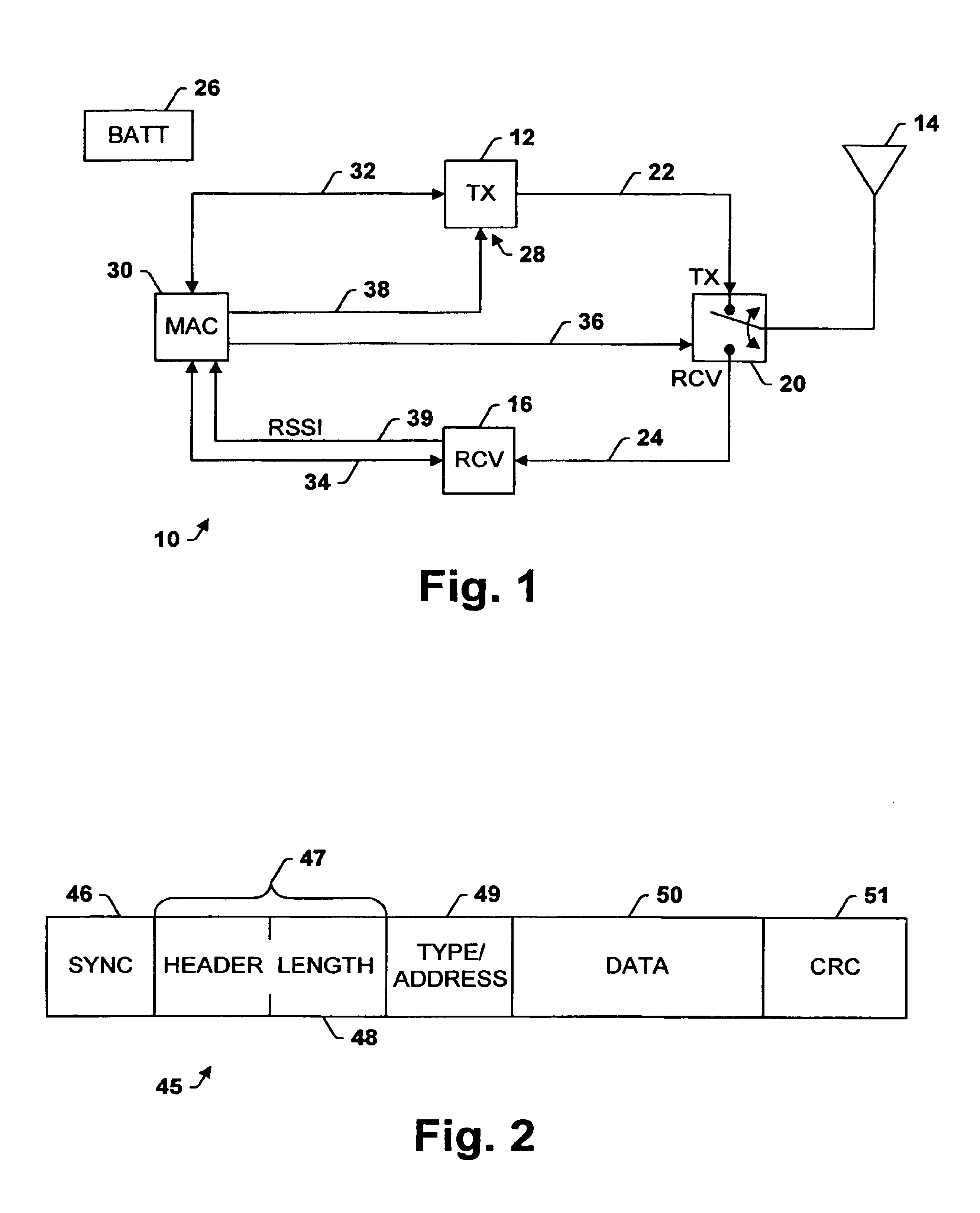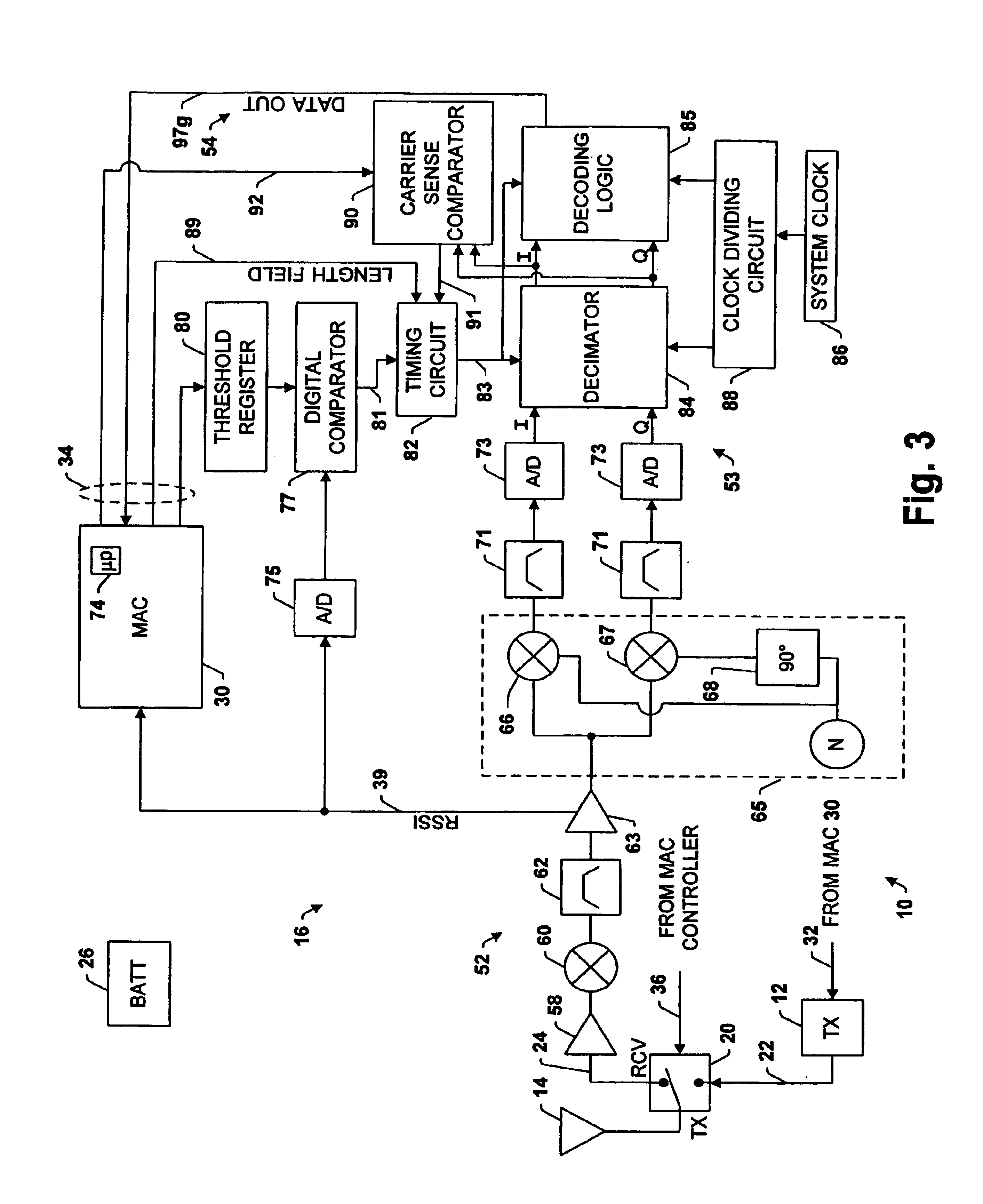Transceiver control with sleep mode operation
a technology of transceiver and sleep mode, applied in the field of wireless communication devices, can solve the problems of limiting the amount of time a device receiving the response must remain in the receiving mode, and limiting the amount of time a device can take to respond, so as to achieve no delay in the exchange of information, the effect of sufficient strength
- Summary
- Abstract
- Description
- Claims
- Application Information
AI Technical Summary
Benefits of technology
Problems solved by technology
Method used
Image
Examples
Embodiment Construction
[0035]The present invention will now be described with reference to the drawings in which like reference numerals are used to refer to like elements throughout.
[0036]Referring initially to FIG. 1, a transceiver in accordance with the present invention is generally designated 10. The transceiver 10 includes a radio transmitter 12 for transmitting radio signals via an antenna 14. In addition, the transceiver 10 includes a radio receiver 16 for receiving radio signals via the antenna 14. An antenna switch 20 allows the transceiver 10 to transmit or receive signals depending on the position of the switch. When the switch 20 is in the transmit (TX) position, the antenna 14 is coupled to the output of the transmitter 12 via line 22 so that the transmitter 12 can transmit information. Alternatively, when the switch 20 is in the receive (RCV) position the antenna 14 is coupled to the input of the receiver 16 by way of line 24. The receiver 16 thereby receives information via the antenna 14....
PUM
 Login to View More
Login to View More Abstract
Description
Claims
Application Information
 Login to View More
Login to View More - R&D
- Intellectual Property
- Life Sciences
- Materials
- Tech Scout
- Unparalleled Data Quality
- Higher Quality Content
- 60% Fewer Hallucinations
Browse by: Latest US Patents, China's latest patents, Technical Efficacy Thesaurus, Application Domain, Technology Topic, Popular Technical Reports.
© 2025 PatSnap. All rights reserved.Legal|Privacy policy|Modern Slavery Act Transparency Statement|Sitemap|About US| Contact US: help@patsnap.com



